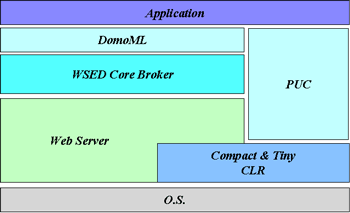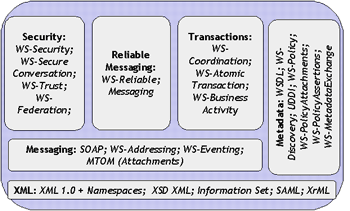
This issue in pdf Subscription Archive: Next issue: October 2005 |
|
|||||||
LIGHT: XML-Innovative Generation for Home Networking Technologiesby Luca Tarrini and Vittorio Miori The LIGHT project aims at designing and developing a standard, service-oriented architecture for the next generation of embedded devices in order to render home networking easier and more effective for the end-user. LIGHT will exploit the Service Oriented Architecture (SOA) paradigm in a new domain, the home environment, proposing advanced and interoperable profiles for household appliances and devising solutions for the problems of overhead associated with hosting Web services on embedded systems. LIGHT (xmL-Innovative Generation for Home networking Technologies) is a research project of the Domotics Lab at ISTI-CNR, Pisa, in collaboration with two local SMEs: SISTER (Sistemi-Territoriali), expert provider of professional GIS services and consultancy, and MicroComm (Microwave Commu-nications), specialized in microwave communications circuits and systems. The project began in November 2004 and is currently developing a lightweight middleware, WSED (Web Services for Embedded Devices), for the seamless networking of embedded systems through the Web services protocols. Increasingly, many appliances, such as video recorders, MP3 players, mobile phones and personal digital assistants have small embedded computing units that allow their users to interoperate in a ubiquitous environment. The actual trend of including a growing number of transistors into ever smaller devices, while decreasing their power consumption and costs, is pointing the Web services domain in a new and interesting direction, the home environment. We believe that the advent of service-oriented protocols opens the way to universal, platform and language neutral connectivity among appliances. This technology is offering much of real interest to the home networking community, in particular with respect to system architecture. In recent years, a number of architectures for home networking have been proposed, all aiming at facilitating dynamic cooperation among devices in order to be able to announce the presence of new services in a network, or to discover services and use them. However, so far, no single architecture provides all the capabilities of the others, and none is yet sufficiently mature to dominate the field. Our research is thus focused on the integration of a rich suite of Web service specifications with resource-constrained devices to enable the typical networking functions. Figure 1 shows our proposed architecture.
To satisfy the specific needs for interoperability between the WSED core and other home computing platforms, LIGHT employs DomoML (Domotics Markup Language) an XML language for communication between household appliances, standardizing the exchange of messages independently of transport media. DomoML provides a unified vocabulary for the description of devices, services and applications, thus guaranteeing interoperability among heterogeneous domotics architectures such as UPnP, Konnex, X10, and so on. The heart of DomoML is the common type system which can be used to describe services and applications. The Personal Universal Controller (PUC) improves the interface of household appliances. It downloads a specification of the appliance’s features and then automatically generates an interface to control that appliance. The XML-based specification language abstractly describes the various functions of the appliances. This specification has been provided by the Pebbles project and we thank Jeffrey Nichols and Brad A. Mayers of Carnegie Mellon University for the software.
Another objective of the project is to integrate these XML-based languages into a single architecture to satisfy the need for interoperability among intelligent appliances and the generation of remote control interfaces for complex appliances. However, in order to integrate all these components within an embedded device, LIGHT must provide solutions to minimize the resource requirements. In fact, the current obstacle to hosting Web services on embedded devices is the high requirement of resources in terms of processing power, available memory, and network bandwidth. This is due to the overhead associated with the execution of applications, data processing and marshalling techniques. The processing and memory limitations of embedded devices may severely compromise the usability of XML, unless suitable optimizations are employed. LIGHT will thus investigate and offer efficient solutions in the middleware layer to overcome the constraints of limited resources typically imposed by embedded devices. This research has been supported partly by the ‘Curiosity Driven’ programme of ISTI-CNR. Link: Please contact: Luca Tarrini, ISTI-CNR, Italy |
|||||||



